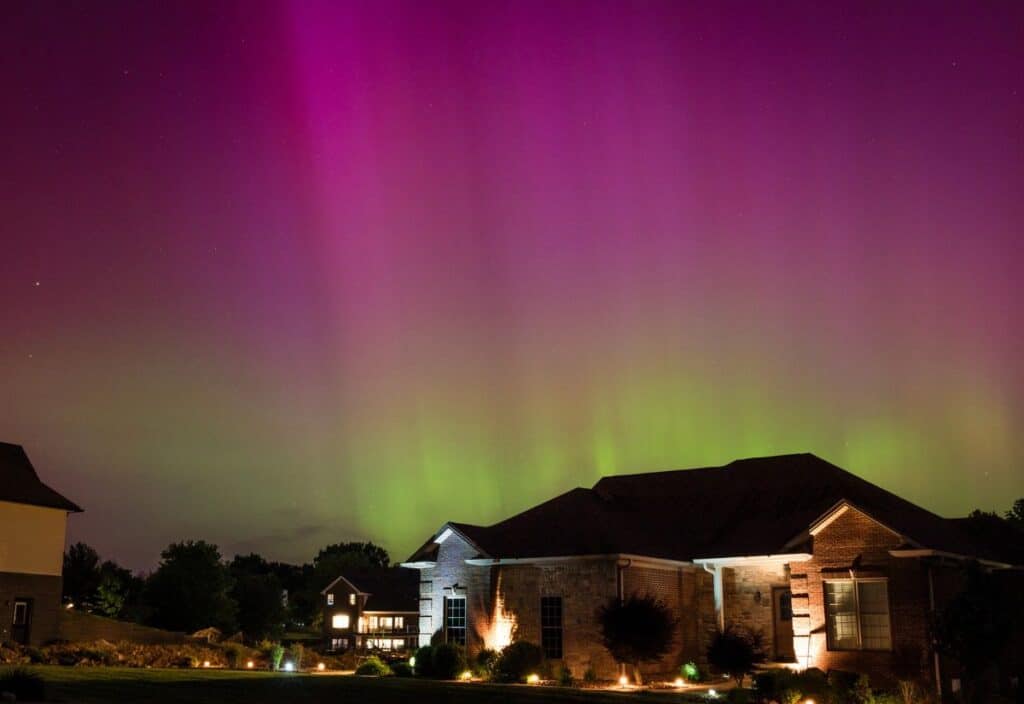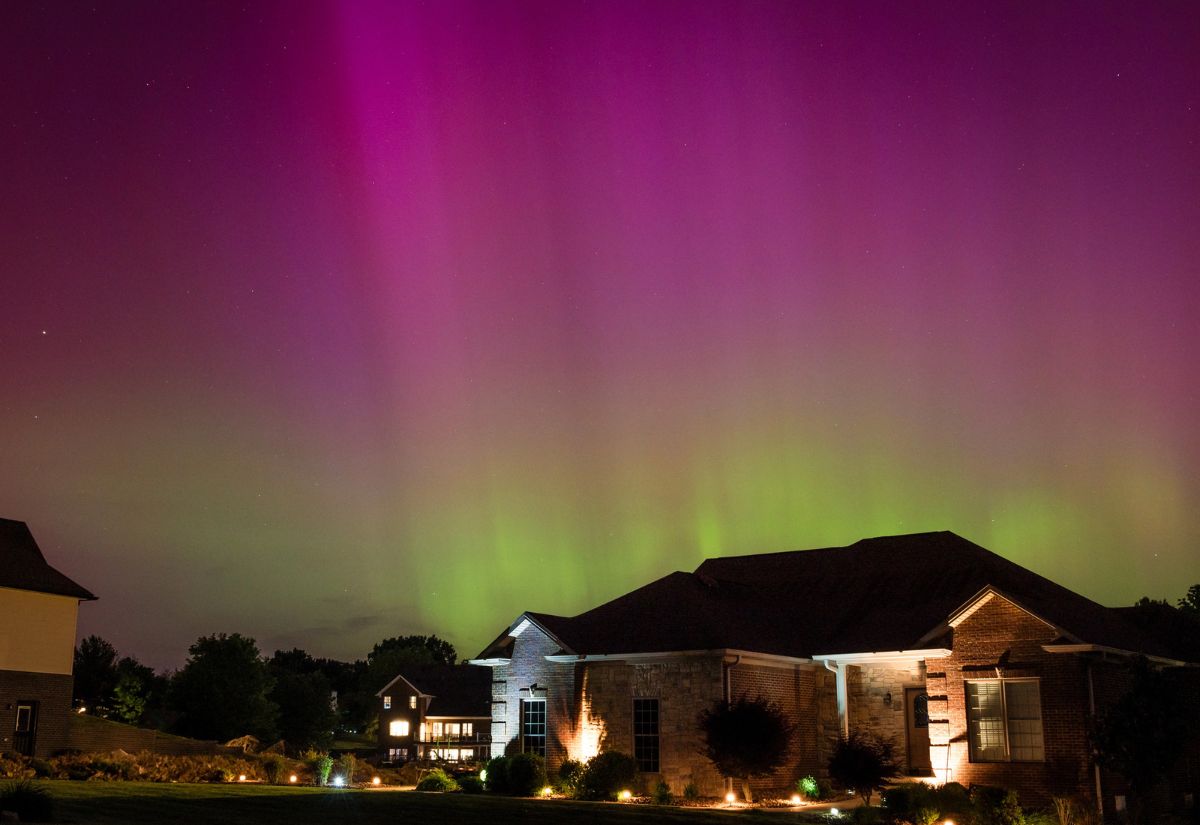How to see the northern lights without leaving the US
For generations, the northern lights felt like something you had to chase across an ocean: Alaska if you were practical, Iceland if you were lucky. But lately, the sky has been rewriting the rules. This past year, the aurora borealis danced over parts of Montana, Minnesota and even North Carolina, painting colors so bright that people stood in their backyards in disbelief. It’s all thanks to a surge in solar activity that’s making the lights easier to see across the Northern United States than at any point in decades.

If you’ve ever dreamed of seeing the northern lights, now’s your moment. You don’t need a passport, just clear skies, patience and maybe a little luck.
Why the northern lights are showing up more often
The sun runs on an 11-year cycle, and it’s now reaching what scientists call its solar maximum: a period of heightened magnetic activity that sends charged particles streaming toward Earth. When those particles collide with the atmosphere, they create the colors we call the northern lights, also known as the aurora borealis. The stronger the storm, the farther south the lights reach.
That’s why people from Oregon to Tennessee have recently witnessed unexpected displays. For northern states already within the auroral zone, like Alaska, Minnesota, Maine and Michigan’s Upper Peninsula, this solar cycle has brought some of the brightest skies in memory.
Why your eyes won’t believe it, but your phone will
If you’ve ever looked up during an aurora and thought, that can’t be it, you’re not alone. The human eye struggles in low light, so faint auroras can appear gray or white, especially at first. The real magic often happens through your camera.
Modern smartphones are surprisingly good at capturing what our eyes can’t. Switch to night mode or manual exposure; a 10- to 15-second exposure works well. Steady your phone on a tripod or rock, and tap the screen to focus. The camera gathers light over time, revealing ribbons of green, pink and violet that were invisible a moment earlier.
It’s a little humbling. Our technology can see the cosmos better than we do, but it’s also amazing to realize those colors were always there, just waiting to be revealed.
The best places to see the northern lights in the US
You don’t have to go far north to find dark skies, but the farther you travel from city lights, the better your odds. Sightings are still rare, but Fairbanks, Alaska, remains the center of American aurora viewing, with long winter nights, clear skies and lodges that even offer wake-up calls when the lights appear.
Northern Minnesota’s Lake Superior shoreline and Voyageurs National Park boast some of the darkest skies in the Lower 48, where reflections on the ice can double the glow. Michigan’s Upper Peninsula, especially the Keweenaw Peninsula and Headlands International Dark Sky Park, attracts photographers year-round for their wide-open horizons.
Farther east, Maine’s Baxter State Park and Aroostook County offer equally stunning viewing, with crisp air and snow-dusted forests that make the colors pop. Out west, vast plains and mountain backdrops across Montana and North Dakota, from Glacier to Theodore Roosevelt National Park, create a spectacular stage for the lights. And if you’re lucky, strong solar storms can bring them much farther south; sometimes as far as Colorado, Nebraska or even Virginia.
When to go
The best months for aurora viewing run from September through March, when nights are longest and skies are clearest. Aim for the hours around midnight to 2 a.m., and check the aurora forecast before heading out. Apps like My Aurora Forecast or NOAA’s Space Weather Prediction Center provide live updates and Kp index readings; a 5 or higher means good odds of seeing the lights. Current predictions indicate the solar maximum may extend into 2026, meaning the next year could be extraordinary for aurora watchers.
In November 2025, the odds are excellent
Will you see the northern lights tonight? Right now, the timing couldn’t be better. In November 2025, the sun unleashed one of its most powerful flares so far of Solar Cycle 25, triggering a G4 geomagnetic storm watch and giving aurora forecasts a rare burst of optimism, even for states well south of the usual viewing zones.
Scientists believe the solar cycle is nearing its peak, which means brighter, more frequent displays are possible through 2026 before activity gradually tapers off. If you’ve been waiting for a once-in-a-lifetime chance to see the northern lights without leaving the country, this is it.
How to improve your chances
To give yourself the best chance of seeing the aurora, head somewhere far from city lights; state and national parks are ideal. Keep an eye on the weather, since even a thin layer of clouds can block the view. Plan to stay out longer than you think you’ll need, as displays often appear suddenly after midnight. Dress warmly in layers, with insulated boots and a thermos of something hot to make the wait more comfortable. And don’t forget a tripod, even a small travel one; it’ll make your phone photos clearer and sharper when the sky finally comes alive.
The wonder overhead
Part of what makes the northern lights so mesmerizing is their unpredictability. You can study every forecast, drive for hours and still never be sure what the sky will do. Then, suddenly, a faint shimmer starts to move across the horizon, and you realize you’re watching something as old as Earth itself.
The aurora borealis isn’t just a light show. It’s a reminder of how alive our planet is, how much happens above us that we never notice, and how, with the right conditions, even a quiet night in Minnesota or Maine can turn into something unforgettable.
So charge your phone, pack a thermos, and look north. The lights are waiting, and for once, they’re closer than you think.
Jennifer Allen is a retired chef turned traveler, cookbook author and nationally syndicated journalist; she’s also a co-founder of Food Drink Life, where she shares expert travel tips, cruise insights and luxury destination guides. A recognized cruise expert with a deep passion for high-end experiences and off-the-beaten-path destinations, Jennifer explores the world with curiosity, depth and a storyteller’s perspective. Her articles are regularly featured on the Associated Press Wire, The Washington Post, Seattle Times, MSN and more.


